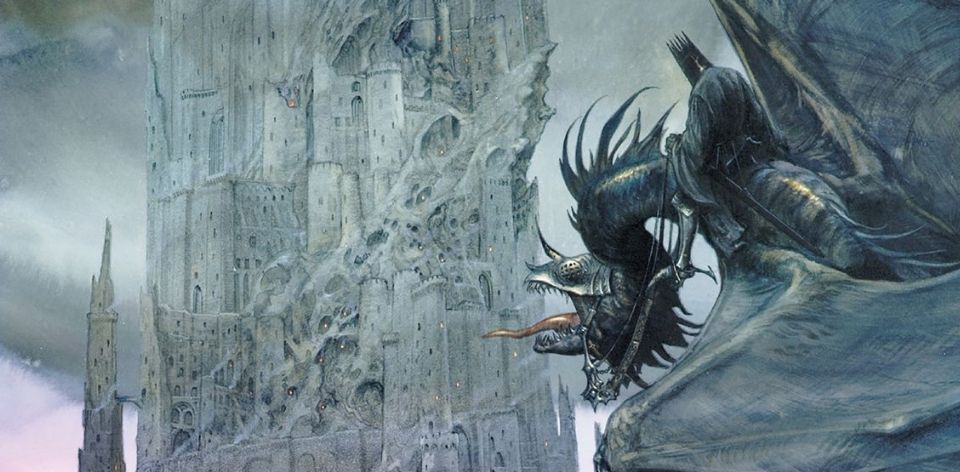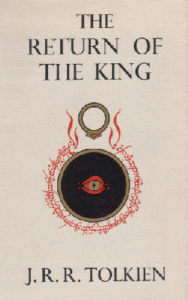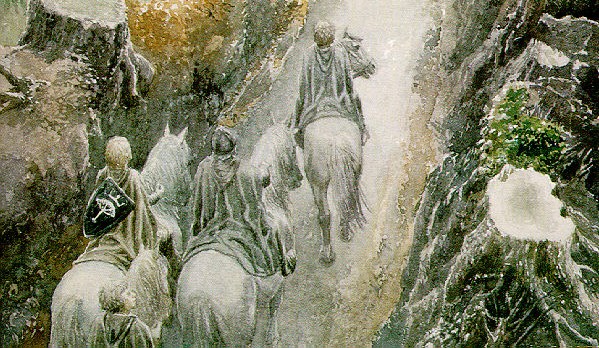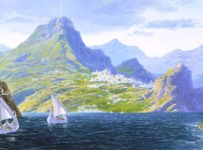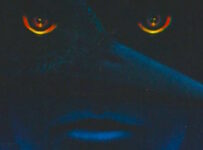Welcome back to The Read Goes Ever On: a casual and personal reading (and in some cases a very slow re-reading) of the works of J.R.R. Tolkien.

“Frodo was alive but taken by the enemy.” That’s where Tolkien’s readers were left in November 1954 at the end of The Two Towers. It would almost be a full year before George Allen & Unwin bestowed THE RETURN OF THE KING on the public, bringing The Lord of the Rings to a close.
So, it must have been a minor frustration for devotees when Tolkien delayed the gratification of closing that thread. ‘Book Five’ of The Lord of the Rings opens with an army of Orcs sent by Sauruman to attack Gondor. Old mate Gandalf tries to warn Denethor, the Steward of Gondor, of the attack. As Aragorn, Legolas, Gimli recruit an Army of the Dead, Théoden gathers the Rohirrim to ride to the aid of Gondor.
The length of this part is indicative of why Tolkien was leaning towards ‘War of the Ring’ as a title — latest called as such in the Millennium edition, and something Christopher Tolkien used when compiling the eighth volume of The History of Middle-earth decades later. What’s interesting to me is that this mighty battle — filled as it is with Nazgûl, the heroic deeds of Théoden’s niece Éowyn, and the solidification of Aragorn’s leadership role — is less interesting to me now than the wider world that surrounds it. This is arguably because I was in my 20s when I last read this and have now found myself middle-aged and creakier of the knee.
So, when we do return to Sam rescuing Frodo from the tower of Cirith Ungol in ‘Book Six,’ there’s a more human (or at least Hobbit) element to latch onto. Which, in my mind at least, has always been the appeal of the legendarium, and indeed any mythological tale. We feel every step of Sam and Frodo trudging to the cracks of Mount Doom. Gollum’s final act, falling into the fire and taking the Ring and Sauron’s power with him, is the end of a cycle and the restoration of faith. It paves the way for Aragorn’s coronation, and his marriage to Arwen. It not only echoes the tales of The Silmarillion (“for mine is the choice of Lúthien…both sweet and bitter”), but literally weds the worlds of humans and elves at the end of the Third Age.
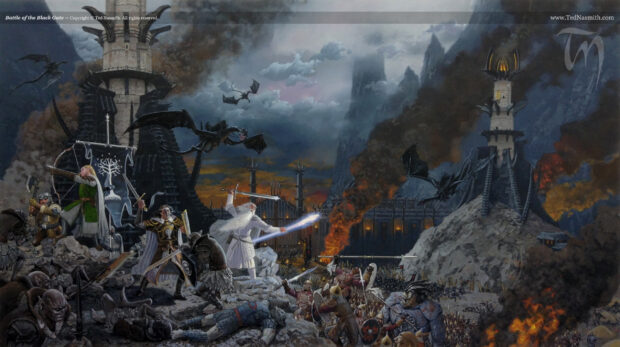
Which just goes to show that it is incredibly difficult to talk about any parts of The Lord of the Rings in isolation. Indeed, I have only chosen to do so here to save readers the chore of devouring something that would be 4,000 words and counting at this point). W.H Auden picked up on this thread in his 1955 review for The New York Times: “Mr. Tolkien has succeeded more completely than any previous writer in this genre in using the traditional properties of the Quest, the heroic journey, the Numinous Object, the conflict between Good and Evil while at the same time satisfying our sense of historical and social reality.”
Tolkien’s final chapters are notable for touching on aspects of that ‘social reality’ often overlooked in modern fantasy. This tale doesn’t end with the defeat of Sauron, but instead Tolkien chooses to deal with the themes of coming home and what comes after. The Hobbits arrive back in the Shire to find it greatly changed, overtaken and ransacked by a wicked geezer named Sharkey (who is later revealed to be Saruman). “This is worse than Mordor!” exclaims Sam. “Much worse in a way. It comes home to you, as they say; because it is home and you remember it before it was all ruined.” Tolkien largely dismissed any one-for-one analogies, but one could argue that this feeling resonated with many a soldier coming home to a post-Blitz Britain — not to mention Tolkien’s own experiences after the First World War.
It’s this aspect that continues to resonate long after the thrills of youthful adventure have passed. Sam sets about rebuilding what was lost, but as the Gandalf, Frodo, Bilbo, and Elves Elrond, Celeborn, and Galadriel all pass to the Undying Lands, the home of the Valar, there is a pervading and mournful sense that something has been lost forever. In fact, I remember the first time I read these as a teen, I wept as Sam declared “Well, I’m back.” Even then I instinctively understood that going home is not always possible, and endings are less than final.
“At last I understand why we have waited! This is the ending.”
In a letter to Auden ahead of the release of this final book, Tolkien wrote: “I do not really think that I am frightfully important. I wrote the Trilogy as a personal satisfaction, driven to it by the scarcity of literature of the sort that I wanted to read (and what there was was often heavily alloyed).” Us modern readers get to sit back in the luxury of seemingly infinite amounts of fantasy literature, crossing over into film and television as if dragons and quests were always part of our lives. Which they were, of course. From King Arthur and Beowulf through to intergalactic civil wars and songs of fire and ice, the hero’s journey and grand mythopoeia that surrounds it are in the very fabric of our cultural makeup.
Tolkien’s saga didn’t end with the publication of this book. Trying to get The Silmarillion into shape, he wrote to Rayner Unwin (in a letter dated 9 May 1957) that it was “practically impossible to get any connected time to spend on The Silmarillion while I remain in office.” Several months later, in September 1957, Tolkien wrote to his son Christopher and his first wife Faith that “My heart and mind is in the Silmarillion, but I have not had much time for it.” He told Unwin he was still “charging well ahead with the reconstruction of the Silmarillion” (in December 1959) but a decade later, he told Michael Tolkien was still in the “process of adjusting the Silmarillion” (November 1969). By 1972, he lamented that “Every extra task however small diminishes my chance of ever publishing The Silmarillion. A month before his death in 1973, he told Lord Halsbury “I begin to feel that I shall never produce any pan of The Silmarillion.” A month before his death in 1973, he told Lord Halsbury “I begin to feel that I shall never produce any pan of The Silmarillion.”
Which leads us to The New Shadow, an unfinished piece that was intended as a sequel to The Lord of the Rings. Set 100 years after the Downfall of Mordor, it was set to deal with a king descended from Aragorn. He furthered the idea of the folly of men, who grew restless and thuggish in an era of peace and prosperity. He told Colin Bailey (in a letter dated 13 May 1964) that “there was an outcrop of revolutionary plots, about a centre of secret Satanistic religion; while Gondorian boys were playing at being Orcs and going round doing damage.” Yet we only have 13 pages of this to go on as a chapter of Christopher Tolkien’s The Peoples of Middle-earth. While The Silmarillion was posthumously released in 1977, this is probably one project left unfinished. Or as Tolkien succinctly concluded “Not worth doing.”
So, as we reach the end of this leg of the journey, I don’t pretend to offer any particular or new insights into these books here. Countless scholars and fans have done close readings of these books over the last half century, and they are sure to continue to do so. Yet this is the first time I have completed these books within the context of “one long Saga of the Jewels and the Rings.” (It’s one of the reasons, along with pandemic brain, that I took a little longer than planned to get through them all). Tolkien may not have lived to see his legendarium all available as one thing, but those of us lucky enough to be living in whatever Age this is get to devour it whole — and create our own versions of the stories across multiple mediums.
In the next instalment of The Read Goes Ever On, I’ll take a deeper look at Bilbo’s Last Song, a poem and picture book that serves as a coda to The Lord of the Rings.

